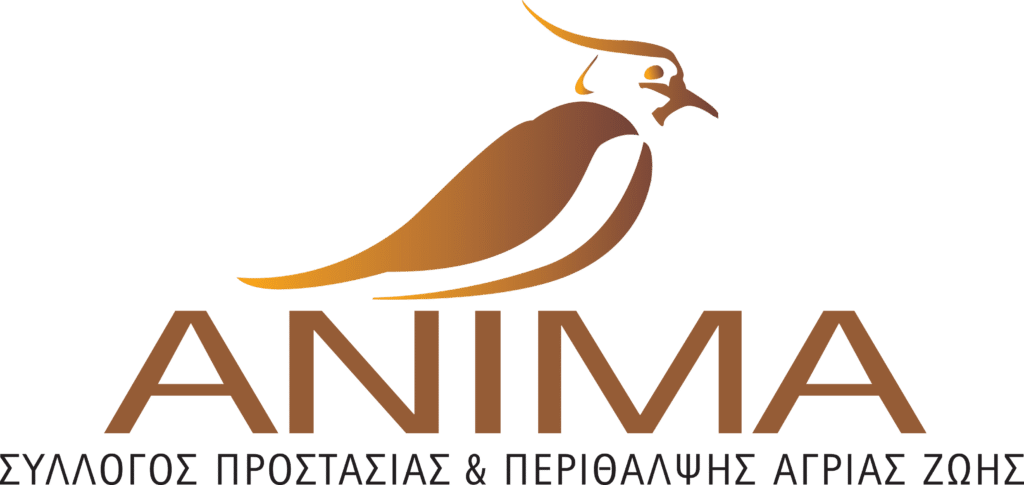Have you found an injured - wounded - exhausted wild animal in any region of Greece? Contact us and we will put you in touch with our nearest partner, so that it can be sent to ANIMA quickly and safely.
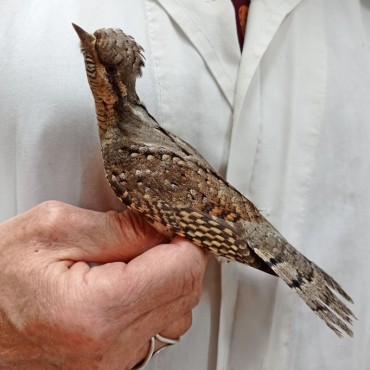 Quickly find a cardboard box, line it with newspaper or kitchen paper roll and punch small holes in it. The size of the box should be such that the bird can stand upright but cannot make unnecessary movements. Catch the bird using a cloth, avoiding its beak and talons if it is a raptor, or its beak if it is a heron or gull. Place it in the box after carefully giving it some water at room temperature. Put the box in the quietest part of the house and keep it warm if it is winter or cool if it is summer.
Quickly find a cardboard box, line it with newspaper or kitchen paper roll and punch small holes in it. The size of the box should be such that the bird can stand upright but cannot make unnecessary movements. Catch the bird using a cloth, avoiding its beak and talons if it is a raptor, or its beak if it is a heron or gull. Place it in the box after carefully giving it some water at room temperature. Put the box in the quietest part of the house and keep it warm if it is winter or cool if it is summer.
CALL ANIMA IMMEDIATELY!
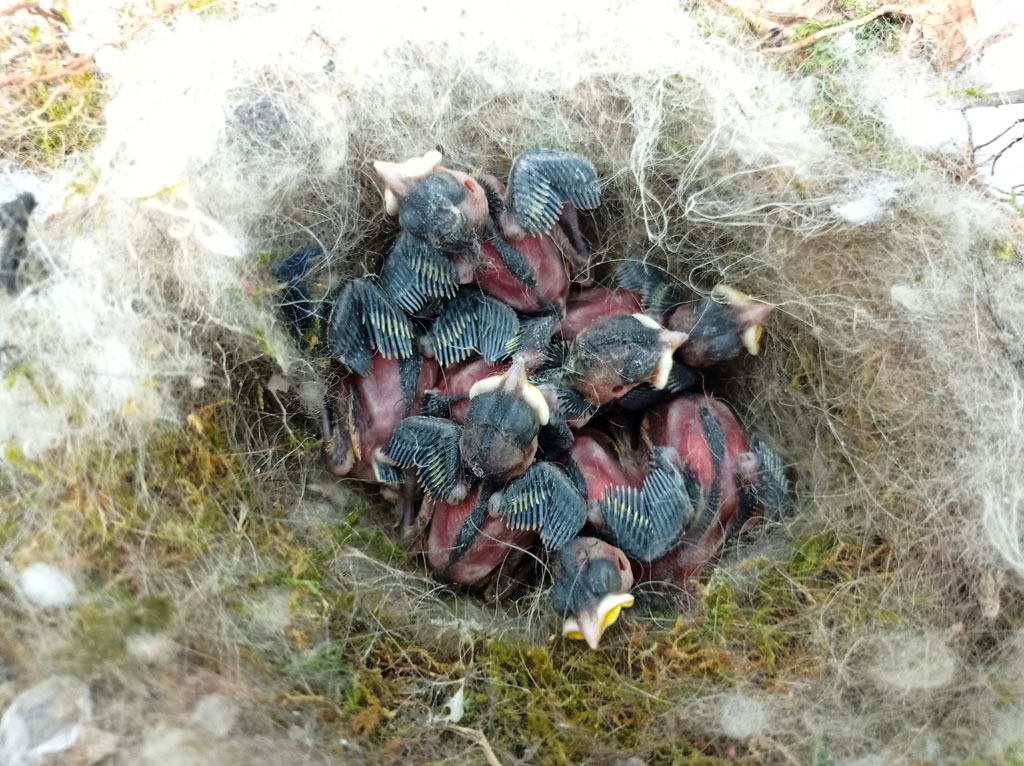
In spring and early summer it is very likely to find chicks that seem to be abandoned and in need of help.
Be careful though!
Not all babies need our help! Often the parents are somewhere nearby and the best thing to do is put the baby somewhere high up and leave it alone.
To know for sure, we should send a photo to a Wildlife Care Centre and wait for instructions.
In cases where we do need to intervene, the following information is useful.
The right instructions can save lives!
And let’s not forget: the aim should always be to return the wild creature to its natural habitat, to reintegrate it into the wild. If we keep the animal longer than necessary, its reintegration will become impossible and that will probably not end well.
In any case, contacting ANIMA is important.
If we find a chick
Warning: these instructions are only useful until you speak with a Wildlife Care Centre representative.
Raptor chicks
If the chicks are nocturnal (owls etc.), the possibility of finding their parents should be exhausted. That’s because these are usually not abandoned babies but simply ‘naughty’ ones who leave the nest prematurely. More often than not the parents are somewhere nearby.
If we find such a baby we pick a high enough spot on a building or a tree and place it in a natural or artificial nest (a hole in a tree or wall, a box with a hole or a basket). Then we watch to see if the parents visit the baby at dusk. Most of the time this method works. Of course it requires some time investment.
As a rule, all raptor chicks should only be fed raw chicken and not minced meat or other red meat. After a day or two they need special supplements (calcium etc.) otherwise their skeleton collapses, which is why we always refer them to a Wildlife Care Centre. That’s also the only way to give the birds a chance of reintegration.
Swallows – Swifts
The right food is frozen insects or mealworms, sold in specialized pet shops and not always easy to come by in provincial towns. However, mealworms alone are not enough.
These birds almost never eat on their own. We have to put the food in their mouth.
A species-appropriate food, until the special food is found or until the chicks are sent to a Wildlife Care Centre, is chicken-based dry food for kittens, soaked in water to become softer. Alternatively, we can sometimes feed them boiled egg white or raw chicken pieces. Swifts are relatively easy to raise and non-experts living far away from Wildlife Care Centres can be relatively successful, provided that they wish to, they keep in touch with experts at all times and they obtain the right food. It is essential that their feathers stay clean and are not damaged, so they must be kept in a cardboard box with lining that is regularly changed (kitchen paper roll, a towel, etc.). When the wings are at least one centimetre longer than the tail while closed, the bird can be released. For the release, pick an open area without power lines and away from highways and give a small push to get the bird to fly into the air. Caution: If we notice that the bird is salivating and its appetite is dropping while rearing it, we must contact ANIMA immediately.
Swallows are more difficult to reintegrate as they are more dependent on their parents than swifts. When they reach an adequate size and are able to fly, they must be released in an area with swallows of the same species during the phase when nestlings have started flying and are being taught to hunt by their parents. This gives them a chance of imitating other individuals of their species. In any case, it is always best to send them to a Wildlife Care Centre.
Sparrows and other seed-eating birds
They must be sent to a Wildlife Care Centre in order to have a chance of reintegrating. Until you are able to send them, they must be fed.
Formulas for seed-eating birds in powder form can be found in large pet shops. You can add water and feed the birds using a syringe. Alternatively you can feed them hard-boiled egg white. When they reach an adult size and shape, release them in an area where many sparrows gather, preferably away from cats.
Blackbird chicks
Until the blackbird is sent to a Wildlife Care Centre, we can feed it insects, dry kitten food, egg and chicken pieces alternately.
Pigeon – Collared dove chicks
They grow up just fine on chick formula mixed with rice flour (without milk). Their crops must be filled with formula 3-4 times a day.
Insectivores (tits, hoopoes etc.)
All insectivorous chicks are generally fed insects and kitten dry food/ boiled egg alternately. You are advised to send these chicks to a Wildlife Care Centre, as reintegrating them is difficult.
Magpie – hooded crow – jay chicks
Must be fed dry kitten food and canned food for kittens/ puppies, raw chicken, egg etc.
Feeding frequency
- When chicks have closed eyes: every 20-30 minutes from sunrise to sunset
- When they have opened their eyes and they rest on their tarsi: every 30-40 minutes from sunrise to sunset
- When they are able to stand: every 40-60 minutes from sunrise to sunset
- When they start jumping around the “nest”: every 1,5-2 hours from sunrise to sunset
IMPORTANT: Temperature
It is very important to keep the chicks’ nest temperature stable. The ideal temperature is 25-30 degrees Celsius. We can achieve this with a desk lamp and an outdoor thermometer to avoid overheating.
Nest
Avoid cages because they can damage birds’ feathers. Opt for cardboard boxes and baskets with absorbent lining. You can use cat litter, newspapers, kitchen paper roll and dry hay (hay for pet bunnies is convenient).
Foxes and martens bite. Avoid their teeth at all costs. Hedgehogs are less dangerous. Throw a thick cloth, a jacket or a blanket over the animal. If it moves a lot, a cardboard box is not suitable. Use a pet carrier for cats/dogs or two plastic “grocery crates” placed on top of each other. For more information, give us a call.
Have you found a newborn mammal?
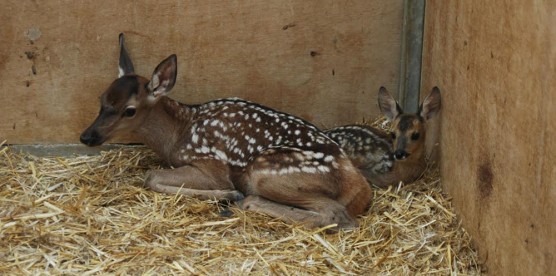 Deer and roe deer fawns
Deer and roe deer fawns
If you find a curled up fawn lying quietly, leave it alone. Its mother is somewhere nearby.
When does such an animal need our help?
- When it is lying down with its legs and neck stretched out away from its body.
- When it is running around in panic and is making calls for more than 1 hour.
- When it has been attacked or has obvious, extensive injuries.
In any case, do not take any action unless you have contacted an official Wildlife Care Centre. Do not look up information on the internet, do not give the animal food or milk and do not try to raise it yourself, as any mistake can cause permanent problems and/or death. Please note the exact spot the animal was found, in case it is possible to reunite it with its mother.
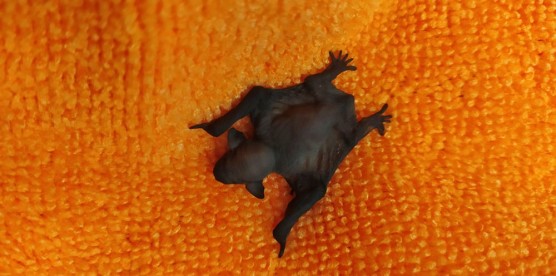 Baby bats
Baby bats
Baby bats are found during the summer months. If you find a bat at any other time of the year, it is a juvenile or an adult. If it is possible, send a photo of the animal to an official Wildlife Care Center so they can tell you if it is a baby or not.
Pick up the bat using a cloth or wearing gloves and put it in a box lined with kitchen paper and with very small holes on the lid. Place a towel in the box, so that it can hide in the folds.
In any case, do not take any further action unless you have contacted an official Wildlife Care Centre. Do not look up information on the internet, do not give the animal food or milk and do not try to raise it yourself, as any mistake can cause permanent problems and/or death. Please note the exact spot the animal was found, in case it is possible to reunite it with its mother.
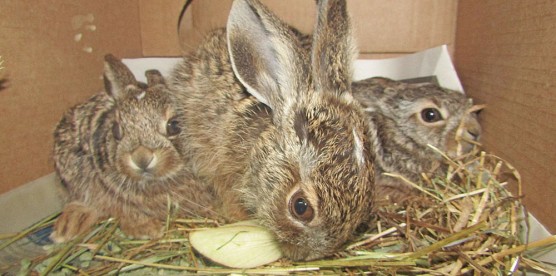 Baby rabbits/ coneys
Baby rabbits/ coneys
If you find a baby rabbit/coney lying under vegetation, curled up and quiet, leave it alone. Its mother is somewhere nearby. You will usually find many of them together because their mom leaves them in their nest for a while.
When does such an animal need our help?
- When it is lying on its side with its legs and neck stretched out away from its body.
- When the mother has not visited the nest for more than 24 hours.
- When it has been attacked or has obvious, extensive injuries.
In any case, do not take any action unless you have contacted an official Wildlife Care Centre. Do not look up information on the internet, do not give the animal food or milk and do not try to raise it yourself, as any mistake can cause permanent problems and/or death. Please note the exact spot the animal was found, in case it is possible to reunite it with its mother.
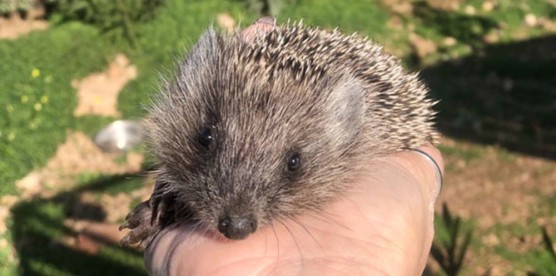 Baby hedgehogs
Baby hedgehogs
If you see one or more baby hedgehogs active during the day, they are not necessarily in danger. The parents are somewhere nearby.
When does a baby hedgehog need our help?
- If it is in immediate danger (e.g. in the middle of the street). With great care and with your own safety in mind move it to the nearest safe place. Wear thick gloves and do not bring it into contact with other animals.
- If it’s bigger than a large apple, put some cat/dog food and water next to it and wait for the parents to find it. If after 24 hours it’s still there, call an official Wildlife Care Center.
- If it has closed eyes or it is smaller than a large apple.
- When it has been attacked/ it bears obvious, extensive wounds/ it has flies on or around it/ it has closed eyes and makes sounds/ when it is curled up with its siblings in a visible spot during the day.
- If it lies next to its dead mother.
In any case, do not take any action unless you have contacted an official Wildlife Care Centre. Do not look up information on the internet, do not give the animal food or milk and do not try to raise it yourself, as any mistake can cause permanent problems and/or death. Please note the exact spot the animal was found, in case it is possible to reunite it with its mother.
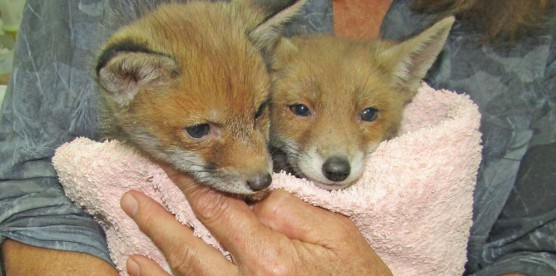 Fox cubs
Fox cubs
If you see one or more fox cubs active during the day, they are not necessarily in danger. The parents are somewhere nearby.
When does a fox cub need our help:
- If it is in immediate danger (e.g. in the middle of the street). With great care and with your own safety as your main concern, move it to the nearest safe place so that its parents can find it. Wear thick gloves because cubs bite and do not bring it into contact with other animals.
- If its eyes are open, put some cat/dog food and water next to it and wait for the parents to find it. If after 24 hours it’s still there, call an official Wildlife Care Center.
- If it has closed eyes.
- When it has been attacked or has obvious, extensive injuries.
In any case, do not take any action unless you have contacted an official Wildlife Care Centre. Do not look up information on the internet, do not give the animal food or milk and do not try to raise it yourself, as any mistake can cause permanent problems and/or death. Please note the exact spot the animal was found, in case it is possible to reunite it with its mother.
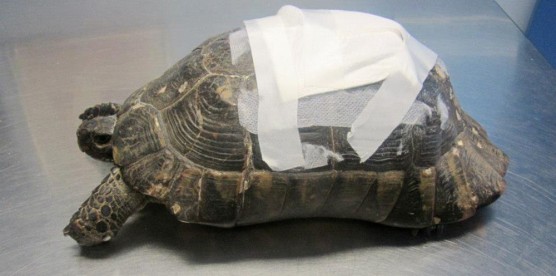 Tortoises with broken shells that have been hit by cars or agricultural machinery are often to be found. Carefully move the animal to prevent the break from getting worse and place it in a cardboard box with plenty of newspaper as lining. If the injury has dirt or grass on it you can rinse it with lukewarm water. Cover it with gauze or a cloth afterwards to prevent infection due to flies etc.
Tortoises with broken shells that have been hit by cars or agricultural machinery are often to be found. Carefully move the animal to prevent the break from getting worse and place it in a cardboard box with plenty of newspaper as lining. If the injury has dirt or grass on it you can rinse it with lukewarm water. Cover it with gauze or a cloth afterwards to prevent infection due to flies etc.
Contact ANIMA or the nearest Wildlife Care Centre.
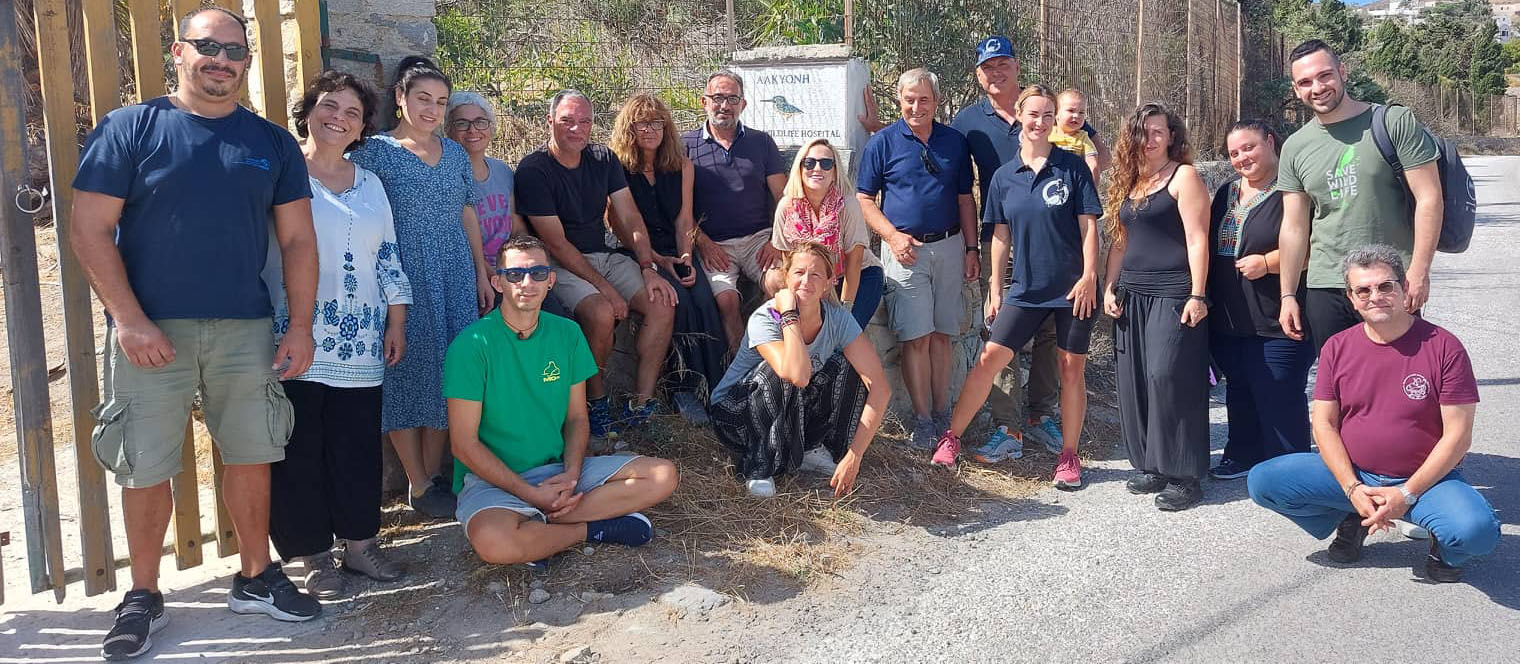
Wildlife care contributes in many ways to the conservation of biodiversity:
- The rescue and successful rehabilitation of animals in care, especially in the case of rare or endangered species, constitutes a direct contribution to the conservation of fauna.
- Through the process of capturing a wild animal, identifying the causes of its heath issue, diagnostic tests etc., we gather valuable scientific data and conclusions necessary for effective wildlife protection.
- Creating networks of volunteers and partners throughout the country further contributes to the gathering of important information that is a tool for scientists and conservation organisations.
- Raising awareness through wildlife care is very important. People are moved and motivated when nature is personified by an injured animal.
- The Wildlife Care Centres for birds, reptiles and small mammals in Greece are the following:
- ANIMA – 2109510075
- Alkyoni – 6944741616
- Action for Wildlife – 6979914852
- For seals
MOm – 2105222888 - For bears and wolves
ARCTUROS – 2386041500 - For sea turtles
ARCHELON – 2108944444 - For dolphins and whales
ARION – 6945644994
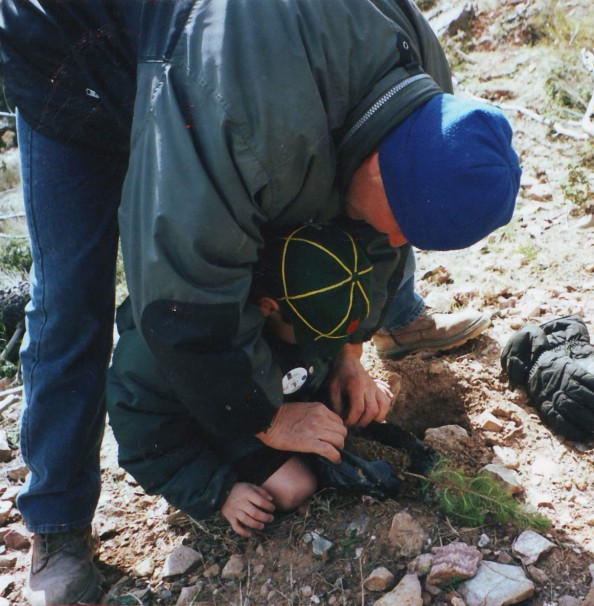 Below you can find a few simple rules that constitute a code of good behaviour around nature in order to avoid disturbing the creatures living in it.
Below you can find a few simple rules that constitute a code of good behaviour around nature in order to avoid disturbing the creatures living in it.
- To prevent fires we do not burn dead grass, branches or rubbish. We do not have outdoor barbecues and we never throw lit cigarettes.
- If we discover a forest fire, we immediately call the Fire Department (199) and give clear information about its location, its direction and the type of vegetation that is burning.
- If our house is close to the forest, we clear the surrounding area of dead grass. We prune trees of up to three meters of height around the house and get suitable fire extinguishers and water hoses. This way we avoid as much as possible keeping the firemen busy in case of fire, so they can focus on saving the forest.
- When we are in the countryside we avoid making loud noises.
- We do not trample or cut down small plants, trees and flowers.
- We observe living creatures discreetly, without harming or disturbing them. We never approach nests to look at them or photograph them.
- We walk on paths and we are very mindful of our surroundings if we go off them.
- If we are mountaineers or rock climbers, we are especially careful during the breeding season (February to June). There may be nests with eggs or chicks on the rocks.
- It goes without saying that the use of cross-type motorbikes in forests or wetlands is extremely harmful, both because of the noise produced and because it destroys plants and nests that may be on the ground. Motocross tracks are usually not legal.
- Paragliding during the breeding season can also be a problem, if it takes place in areas where there are bird colonies or individual raptor nests.
- We must be careful, especially during the breeding season, when approaching isolated rocky islets by boat. Rare birds may nest on them.
- We do not let our dog loose in forests, wetlands or rocky islets during the breeding season of wild animals.
- As obvious as it may seem, we should never throw anything into the sea or at the beach.
- When sailing we avoid disturbing marine mammals if we encounter them. We help to collect data and scientific information related to them and we send it to the institutions working for their protection.
- We never anchor with a boat on Neptune grass (Mediterranenan tapeweed), which is a shelter and breeding ground for hundreds of marine organisms.
- In recreational fishing, we respect the law and never fish for endangered species and species smaller than the minimum size allowed.
- We do not fish in lakes, where unique Greek endemic freshwater species may live.
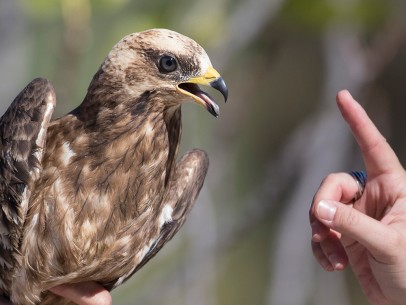
- Joint Ministerial Decision: Criteria and procedure for the recognition and supervision of Wildlife Care Centres (WCC) and Wildlife First Aid Stations (WFAS). Ministry of Environment & Energy/DDD/88658/2929
- Bern Convention (Appendices II & III), “On the Conservation of the European Wildlife and Natural Environment”.
- Council of Europe Directive 79/409/EEC of 2 April 1979 on the conservation of wild birds
- Bonn Convention: Council Decision 82/461/EEC of 24 June 1982 on the Conservation of Migratory Wildlife Species
- Council Directive 92/43/EEC of 21 May 1992 “On the conservation of natural habitats and of wild fauna and flora”.
- Presidential Decree No 67, Government Gazette 23/A/30-1-81, “On the protection of native flora and wild fauna and the establishment of a procedure for the coordination and control of research on them”.
- CITES Convention, “On International Trade of Endangered Species of Wild Fauna and Flora”. The CITES Convention (Convention on International Trade in Endangered Species of Wild Fauna and Flora) regulates the international trade of endangered species of native flora and fauna. The States Parties of the Convention have agreed to observe and apply uniform principles, rules and specific procedures for the transport and trade of species of wild fauna and flora in order to protect endangered species worldwide.
